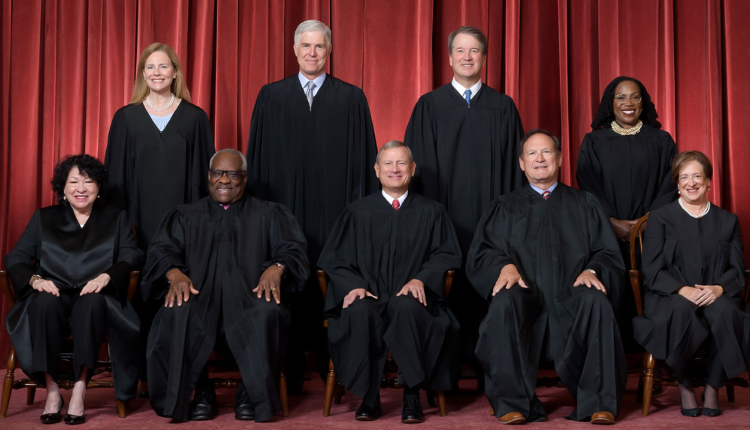So far this term, Supreme Court opinions aren’t splitting strictly along ideological lines

The U.S. Supreme Court as composed June 30, 2022, to present. Photo by Fred Schilling via the Supreme Court website.
None of the U.S. Supreme Court decisions issued so far this term has split strictly along ideological lines, even with two decisions decided by 5-4 votes and three by 6-3 votes, according to the Empirical SCOTUS blog.
And that’s not the only unusual fact associated with the term, according to the May 15 blog post.
The Supreme Court’s liberal justices have been in the majority more often than the high court’s conservatives. In percentage terms, conservative justices have so far dissented 13.87% more frequently than liberal justices. Since 2005, the only other term in which conservatives dissented more frequently at this point was in 2014, when the difference was 17.83%.
And the three liberal justices have only one dissent each, which amounts to 5.57% of their votes, according to the blog post. The last time that they dissented less frequently at this time was in 2005, when they dissented in 5.38% of their votes.
Comparisons to past terms are based on decisions by May 18, the date that the Supreme Court is next expected to issue opinions.
“The liberal justices’ strength in the majority so far this term is quite an anomaly when compared to prior terms,” according to Adam Feldman, writing at his Empirical SCOTUS blog.
One reason why is that the most divisive cases have not yet been decided, including cases on affirmative action, voting rights and student debt relief, Feldman said. And the Supreme Court “is still appreciably behind its pace from all previous terms in the last 100 years.”



